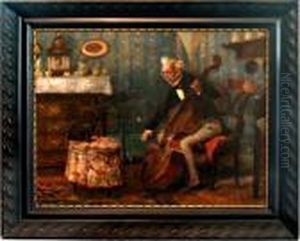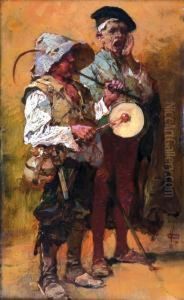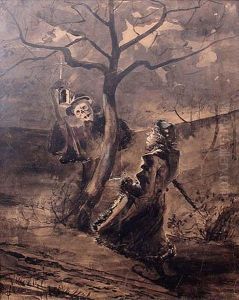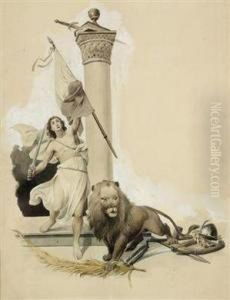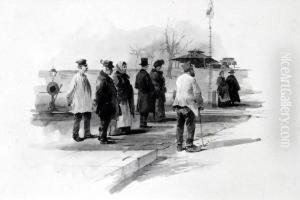Victor Oliva Paintings
Victor Oliva, born in 1861 in Prague, then part of the Austro-Hungarian Empire, was a Czech painter and illustrator whose work captures the spirited and dynamic culture of Prague at the turn of the 20th century. Oliva’s artistry is often noted for its eclectic mix, blending elements of Symbolism, Art Nouveau, and Impressionism, though he is perhaps most renowned for his vivid depictions of café society and the bohemian lifestyle prevalent in European urban centers during this period.
Oliva’s early life and education in the arts were deeply intertwined with the cultural vibrancy of Prague. He studied at the Academy of Fine Arts in Prague, where he honed his skills in painting and illustration. His works during this time started to reflect the artistic movements that swept through Europe, incorporating the sinuous lines of Art Nouveau and the symbolic themes of decadence and dreams. Despite this, Oliva carved out a unique niche for himself, focusing on the nightlife and its denizens, which became a recurring theme throughout his career.
Perhaps the most iconic of Oliva’s works is 'The Absinthe Drinker,' a painting that encapsulates the essence of bohemian café culture. This piece, showcasing a solitary figure lost in thought over a glass of absinthe, is often interpreted as a reflection on isolation, introspection, and the darker sides of indulgence. Such works not only demonstrate Oliva’s mastery of form and color but also his ability to capture the psychological depth of his subjects.
During his lifetime, Victor Oliva was a prolific contributor to various magazines and publications, illustrating scenes of everyday life with a keen eye for detail and a distinctive style that set his work apart from his contemporaries. Despite his contributions to the art world and the cultural life of Prague, his name was not widely known outside of his native country for many years. It was only posthumously, as interest in Art Nouveau and Symbolism resurged, that Oliva’s work gained wider recognition.
Victor Oliva passed away in 1928, leaving behind a rich legacy of paintings and illustrations that continue to be celebrated for their unique insight into the social and cultural life of Prague at the turn of the century. Through his work, Oliva remains a vital figure in understanding the artistic evolution of Central Europe and the enduring allure of its café society.
